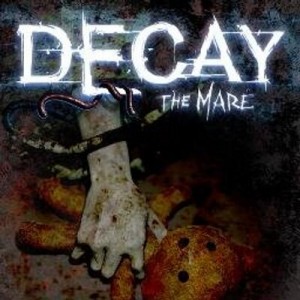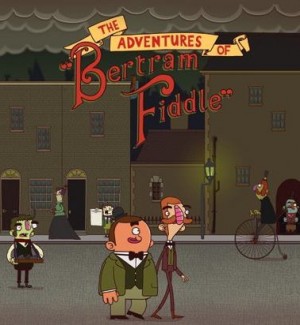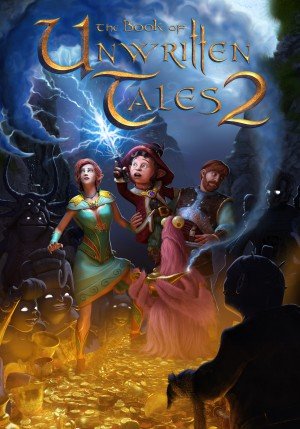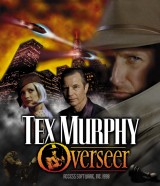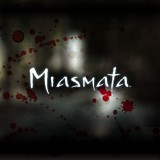Review for Morningstar: Descent to Deadrock
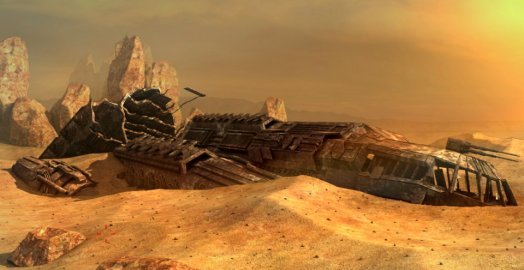
Hurtling towards the surface of the ominously-named planet Deadrock, with your engines dead and your captain critically injured, it's down to you to save the day. So begins Morningstar: Descent to Deadrock, the first commercial title from Hungarian developer Red Herring Labs. It’s not so much new as remastered, however, having begun life in 2009 as a free Flash game. Compared to the original, the plot remains the same but the graphics, soundtrack and voice acting have all been substantially updated or redone and some new locations and puzzles have been added. The result is much more polished, but whether it's substantial enough to cut it as a full-fledged PC title is more debatable.
You play as Powell, one of the UNS Morningstar's three crewmembers. The Morningstar was a vessel in the United Nations Navy once, but these days she's got a cargo hold full of leather jackets and a surprisingly well-fitted medical bay. (It's never really clear whether you're simple traders or on some kind of research mission.) Whatever your plans were, though, they're put on hold by a gravitational anomaly that sends you crashing into the infamous Deadrock. Fried engines, a leaking hull and a captain that got skewered on landing are just the start of your problems.
Now, if you've got even a glancing acquaintance with sci-fi, this probably all sounds pretty familiar. Morningstar doesn't set out to tread any new ground, settling instead for being a slice of space opera comfort food. As such, it starts out well, with an opening cinematic full of breathless action set to a pounding soundtrack, showing the Morningstar's final moments. It leaves you ready to start racing against time to fix your ship before all the air leaks away and generally anticipating a taut, suspenseful experience. Which makes it all the more a shame that this lovely dramatic tension is immediately squandered. When you first gain control, it's the exact opposite of the introduction: static and laid-back rather than dynamic and pulse-pounding. This is partly down to the slideshow depiction of the spaceship you find yourself in, and partly to the dull voice acting by the game’s only two characters.
When you consider the small size of the development team, the graphics themselves are well done, albeit in a late-‘90s kind of way. But when I said static I really meant it. For starters, you get a first-person view, so there's no character to guide around the screen, and most scenes have no ambient animations. In addition, unlike other Myst-style series, there's no way to rotate the view or look up or down. You're simply presented with screen after still screen to click through. Just occasionally, the developers manage to slip in some animations and the results are rather satisfying: one chamber featuring a giant rotating alien machine looks great. It just feels like they ran out of resources or time, possibly on account of spending them all on those early cutscenes.
The Morningstar is a pretty utilitarian-looking spaceship too, all flat panels and blues and greys. The Martian-like desert outside does add a splash of colour but, again, it's nothing unexpected. This is no exotic alien planet, full of fabulous flora and fauna; it's sand and rocks as far as the eye can see. Even the alien complex you stumble into later on seems surprisingly like a human factory in design, though one of their machines looks more like a piece of modern art than a piece of high technology and others look more like Easter Island heads. You could be forgiven for feeling that the aliens aren't really that alien after all.
By contrast, one area where Morningstar really shines is in the sound design. It's very minimalist – a mix of ambient sound and background music consisting of long chords with only occasional musical phrases – but the impact is wonderfully atmospheric. The desert outside has a North African flavour, while in the alien complex the soundtrack shifts to more synthy chords. The transitions are smooth, too, with elements almost imperceptibly fading in and out of the soundscape as you move from location to location. The whooshing of the wind and mournful Arabic instruments give the desert, for example, much of the liveliness that's missing from the static graphics.
The voice acting, unfortunately, is another story: to say it's a bit flat would be an understatement. There are only two significant voice parts to begin with, namely your character and the Morningstar's captain, Novak, and you rarely get any sense that either is feeling anything other than bored. It varies from an "I'm just reading this into the microphone" monotone to amiable if stilted banter, but the whole mission might as well be a training exercise for all the stress either man appears to feel. Even when you're leaving the ship in a desperate bid to scavenge parts from another downed vessel to jury-rig the Morningstar's drive and escape deadly aliens, the captain (who's seriously injured and quite possibly dying) acts more like you're popping round the corner for fast food. He even asks you to bring him back a cheeseburger, with fries and a diet cola. The dialogue itself can be a bit awkward in places, and perhaps the jokes lose something in translation, but on the whole it's perfectly serviceable and always clear.
Neatly, the game takes advantage of the fact that Powell spends the whole game wearing a spacesuit to present much of the interface as a heads-up display in his helmet. Mouse over a hotspot, for example, and a readout pops over it to tell you what it is. Exits, likewise, show up as throbbing, labelled arrows. These hotspot readouts fade out as you move the mouse away, but they don't disappear entirely, remaining every time you return to a location. They fade a bit more than I'd have liked, becoming really quite hard to see at times, but it's still useful to have an ongoing record of the hotspots you’ve uncovered, and they do brighten up again when you mouse back over them. Unfortunately, though, there's no hotspot highlighter: the game remembers objects, but it's up to you to find them in the first place. That's complicated by the fact that all the hotspots seem to be the same size, even for quite large objects. At one point, I ran across a door and didn't at first realise I could interact with it simply because I didn't mouse over the part of it that triggered the hotspot.
The rest of the interface consists of a column on the right of the screen for your inventory and two buttons, one to bring up the main menu and the other to radio Novak for a hint. Oddly, the inventory is presented as a single column that scrolls as necessary but eschews a scrollbar or up/down buttons; I'm not sure it's possible to play without a scroll wheel mouse. Otherwise, though, it's all pretty conventional: left-clicking an object either elicits a comment on it or picks it up, and an inventory item can be selected for use on a hotspot or other object you want to use it with. The only time you’ll right-click is to examine inventory items, bringing up a zoomed-in view and some descriptive text, though mousing over the item brings up a magnifying glass icon that you can left-click instead.
As a hint system, the captain veers between being frustratingly vague and all too clear: sometimes he'll tell you exactly what to do next while on other occasions he'll simply remind you of your current objective without really helping you towards it. At any given time there's only one hint available, but fortunately the game is linear enough that it’s rarely an issue. It’s not totally linear. Indeed, you’re given three objectives at a time on a couple of occasions, but they’re not independent of each other so you’ll find yourself tackling them in a definite order anyway unless you go out of your way to avoid it.
The puzzles themselves are almost entirely inventory-based, often centering around your need to build or repair gadgets of one sort or another out of the items you find. On the whole it's pretty straightforward and logical, even if some of the solutions would (I suspect) make real engineers cringe. You do have to decode some alien symbols at one point, but it's nothing very involved. One eyebrow-raising aspect, though, is the way you're able to instinctively understand alien technology and interface it with pieces of human equipment despite (presumably) never having encountered these aliens before. If you had some kind of device that could analyse the alien equipment to guide you (a bit like Star Trek's universal translator, but for hardware) it might have been more believable, but as it is Powell comes across as an engineering savant rather than a humble spacer.
The game also seems to take for granted the instinctive desire to explore, poke at things and take anything that's not nailed down, leaving out any other justification for some of the things you have to do. For example, on one occasion you come across a makeshift grave and Powell immediately suggests digging it up. There's no reason to assume there's anything interesting in there and every reason to leave it alone out of common respect, but no: you have a shovel and it's a thing you can dig, so you're expected to do just that.
The most frustrating aspect of Morningstar is that it feels like just a sketch of the game it could have been: nothing's explored in any detail and Powell comes across as just about the least curious man in the galaxy. For example, the planet you crash onto, according to the ship's computer, is formally known as Beta Cygni but better known as Deadrock. With a nickname like that, it's easy to imagine that it has gained a reputation as a sort of Bermuda Triangle in space, with ship after ship going missing there. At least, that's what I chose to imagine though none of that is ever expanded upon. All we get is that it's known as Deadrock and that's scary, and that's supposed to be enough. If it's such bad news, why did you even wind up going close enough to get stranded there? Or take Powell's relationship with his captain: they get along as well as they have to, but he repeatedly says he doesn't like the man much. Why? Again, no answer.
It gets even more frustrating the more you explore, because the so-called Deadrock isn't in fact dead at all: at least two alien races feature in the plot, and one of them seems to have mysteriously disappeared, leaving only its technology behind. What happened to them? Powell's too busy improvising a way off the planet to stop and ask, so we can only speculate. These issues serve their appointed role in setting up the plot well enough, but there's no time for details. In fact, it feels like the game is entirely missing what could have been its main plotline, with the small, immediate story of a crashed ship turning into a much grander story arc of a highly evolved alien race facing its final days. Sadly, that grander story will have to wait for another game because it's barely touched on here.
All of this is reflected in the short playtime of only 2-3 hours. In the context of the original Flash game, that would have been pretty substantial, but as a full commercial PC title (especially considering the potential here for a meatier plot) it feels a bit lightweight.
Ultimately, the word that best sums up Morningstar: Descent to Deadrock is workmanlike. All the necessary pieces are here and functional, and there are even flashes of genuine flair in the cutscenes and music, but the end result is short and not very memorable. Given more resources and ambition, I definitely feel that the developers have a bigger, better game in them and I look forward to seeing what they come up with next. In the meantime, Morningstar is worth playing mainly if you're a particular fan of space opera and content to fill in the gaps with your own imagination.














